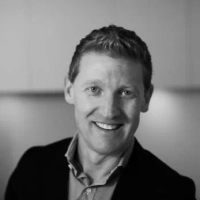18 Steps for Breaking Down Large Projects into Manageable Tasks
Tackling immense projects can be daunting, but with the right strategies, it becomes a journey of manageable steps. This article distills expert advice into practical techniques for breaking down large projects. Discover the power of detailed planning, setting clear milestones, and actionable tasks to transform overwhelming endeavors into achievable victories.
- Create A Detailed Plan
- Set Clear Milestones
- Start With A Detailed Assessment
- Break Projects Into Actionable Tasks
- Set Clear Goals And Prioritize
- Use Phased Approaches In Therapy
- Use Mindfulness And Emotional Regulation
- Lean Into Feeling Overwhelmed First
- Introduce Healthy Snacks In Phases
- Use Financial Markers For Mini-Goals
- Employ A Structured, Phased Approach
- Work Backward From The End Goal
- Assess And Document The Current Situation
- Utilize Agile Methodologies
- Identify The End Goal
- Break Objectives Into Measurable Tasks
- Break It Down Backward
- Use A Modular Planning Approach
Create A Detailed Plan
Breaking down large projects into manageable steps starts with creating a clear, detailed plan. I always begin by understanding the scope of the project and identifying the end goal. Once that's established, I divide the work into phases, starting with the most time-sensitive or foundational tasks. For example, when I tackled a large backyard transformation project for a client, the first step was assessing the site and consulting with the client to establish a vision. From there, I prioritized soil preparation, then moved on to installing irrigation systems, planting structural greenery, and finally adding finishing touches like mulching and decorative elements. By focusing on one phase at a time and building on each completed step, the project stayed on track and avoided unnecessary stress or delays. This method works so well because it creates momentum and allows for quick adjustments if something unexpected arises. My 15 years of experience and certification in horticulture play a critical role here, as they help me foresee potential challenges and address them before they become problems. For the backyard transformation, my knowledge of plant selection and soil science ensured the plants thrived in the environment, and my experience with landscaping design helped the layout flow seamlessly. Breaking the project into smaller tasks not only made it more manageable for my team but also gave the client a clear understanding of the progress being made, building their confidence in the outcome. This approach ensures steady progress without feeling overwhelmed and results in high quality, professional finishes every time.
Set Clear Milestones
Let me share a practical approach I've found works wonders for tackling large projects without losing your mind. It combines two key ideas: setting clear milestones and working backward from your end goal.
The Basic Setup
First, get crystal clear on what you're trying to achieve. Want to launch a new product by summer? Great - write down exactly what that finished product looks like and when it needs to be ready.
Then, here's the smart part - work backward from that end date. If you're launching in June, what needs to happen in May? In April? Map out these major checkpoints, keeping them specific and measurable. For a product launch, you might need milestones like "finish product design," "complete testing," and "prepare marketing materials."
Making It Happen
Break each milestone into concrete tasks. Instead of the vague "prepare marketing," list out specifics like "write press release" or "design social media graphics." Use whatever tool works for you to keep track - whether that's a simple to-do list or project management software like Asana or Trello.
Think about what needs to happen first. Some tasks depend on others. Sort out these dependencies early to avoid headaches later.
Be realistic about timing and resources. Give yourself buffers for unexpected hiccups, and make sure you know who's responsible for what. Regular check-ins help spot potential issues before they become problems.
Why This Works
This approach takes the panic out of big projects for several reasons:
- You're focusing on one piece at a time instead of the overwhelming whole
- You always know what to work on next
- You can see your progress clearly
- The work spreads out naturally, avoiding last-minute scrambles
- You can adjust course if things don't go as planned
Real World Example
Let's say you're organizing a company training event. Rather than stressing about everything at once, you'd break it down:
Your end goal is running a two-day training for 100 people. Working backward, you need a venue, training materials, instructors, and participants. Starting with the venue, your immediate focus becomes researching options, getting quotes, and making a booking by a specific date.
Suddenly, instead of worrying about the whole event, you're just looking for venue options - much more manageable, right?
By taking this methodical approach, big projects become a series of smaller, doable tasks. It keeps you moving forward without feeling overwhelmed.

Start With A Detailed Assessment
One of the most effective techniques I use for breaking down large projects is starting with a detailed assessment and creating a clear step-by-step plan. For example, if we're tasked with removing multiple large trees from a residential property while protecting the surrounding structures and landscaping, the first step is conducting a thorough site evaluation. With my TRAQ certification, I'm able to identify potential hazards, such as weak branches, tree lean, or proximity to power lines. Once the risks are assessed, the project is broken into stages: equipment setup, limb removal, trunk sectioning, and final cleanup. Each stage is assigned specific tasks to my team of experienced professionals, ensuring everyone knows their role. This structured approach helps us tackle even the most complex projects efficiently and safely while maintaining a high standard of quality. This method prevents overwhelm by shifting focus from the entire project to smaller, more manageable milestones. For instance, during a storm damage cleanup project involving 15 fallen trees across a large property, our team prioritized clearing access points for safety and systematically moved through the property section by section. My more than 20 years of experience in the industry has taught me that breaking down a project in this way not only keeps my team productive and motivated but also gives the customer peace of mind knowing the project is being handled professionally and methodically. This steady progress ensures we deliver excellent results on time, no matter the scale of the job.

Break Projects Into Actionable Tasks
As a clinical psychologist and co-author of books on ACT and interpersonal therapy, I've found that breaking down large projects into manageable steps greatly improves both personal and therapeutic progress. One effective technique I use is breaking projects into smaller, actionable tasks by leveraging time management strategies, similar to those taught in activity scheduling for clients with anxiety or ADHD. By setting achievable short-term goals, it mirrors our approach at the Bay Area CBT Center, where clients gradually build their well-being through structured, incremental actions.
For instance, in therapy, we might begin with identifying the smallest task, such as dedicating just five minutes a day to a new coping mechanism. This method aligns closely with the benefits outlined in breaking down tasks into smaller segments for managing ADHD, increasing focus without overwhelm. On a larger scale, I've applied this method to book projects by starting with outlining chapters and focusing on writing a few pages daily, maintaining steady progress and reducing the feeling of inundation. By prioritizing tasks and continually reviewing progress, we not only reach our goals but also cultivate resilience and adaptability in both therapy and larger personal projects.

Set Clear Goals And Prioritize
Breaking down large projects into manageable steps starts with clear goal-setting and prioritization. I begin by identifying the overall objective and then break it down into smaller, actionable tasks. Each task is assigned a realistic timeline and specific resources, ensuring nothing is overlooked. This method allows me to maintain focus on immediate priorities without losing sight of the bigger picture. Regularly reviewing progress is also critical, as it helps me stay on track and make adjustments when necessary. My 30 years of experience have taught me that structure and adaptability go hand in hand, enabling steady progress and reducing the risk of feeling overwhelmed. For example, when I transformed Collins Place Physio into The Alignment Studio, the project felt monumental. It required rebranding, expanding services, hiring new team members, and renovating the space. I approached it by breaking each element into phases: strategic planning, operational changes, and marketing rollout. With my background in managing multidisciplinary teams and my education in physical therapy, I knew the importance of sequencing tasks effectively and leveraging expertise. For instance, I focused first on hiring skilled professionals who aligned with my vision, ensuring the foundation was strong before expanding services. By addressing one piece at a time, I not only met deadlines but created a thriving, integrated clinic that has since become a leader in Melbourne's health and wellness industry. This systematic approach proved invaluable in turning a daunting vision into a tangible, successful outcome.

Use Phased Approaches In Therapy
When tackling large projects, I often draw from my experience with phased approaches in therapy, like the eight-phase structure of EMDR therapy. This structured method helps manage complex tasks by dividing them into smaller, sequential steps, ensuring each phase builds on the previous one. For example, in therapy, we start with history-taking to lay a foundation, moving through stages like assessment and desensitization, which can be applied to projects by first outlining goals, assessing resources, and then gradually tackling tasks.
Another method I use is drawn from Internal Family Systems (IFS) therapy, where I break down complex emotional landscapes into distinct parts, such as Managers, Firefighters, and Exiles, each with unique roles. Similarly, I dissect projects into manageable components by identifying "managerial" tasks that require strategic oversight, "firefighter" tasks that address urgent issues, and foundational tasks akin to addressing "exiles" that form the core. This approach allows me to address each aspect while maintaining a clear view of the entire project.
Engaging with these techniques, I can approach large projects systematically, ensuring that I stay grounded and prevent overwhelm. By applying the therapeutic principles of mapping and gradual integration to project management, I maintain progress and remain adaptable, just as I would guide a client in therapy through their healing journey.
Use Mindfulness And Emotional Regulation
As a Licensed Professional Counselor, I often work with clients to help them tackle overwhelming projects by breaking them into smaller, actionable steps. A technique that I find effective is inspired by the therapy process itself. Just as we set successive, attainable goals in therapy, I recommend creating a step-by-step action plan custom to individual strengths and challenges. This method simplifies complexities and maintains focus, allowing steady progress.
In my practice, I incorporate mindfulness and emotional regulation strategies. For example, when a client feels overwhelmed, we often use mindfulness to focus on one task at a time, which reduces anxiety associated with large projects. This approach not only improves productivity but also helps clients feel in control and less stressed.
In therapy settings like group sessions, I encourage clients to share their plans and seek feedback, which fosters accountability and support. A similar method can be applied in project management where regular check-ins with peers or mentors can provide motivation and ensure adherence to the process, preventing feelings of isolation or stagnation in the project journey.

Lean Into Feeling Overwhelmed First
Here's my weird-but-effective approach: I actually lean into feeling overwhelmed first. Dump everything out of my brain and onto paper or Notion, especially the stuff that feels impossible. Let it be a complete mess. The overwhelm is data - it's showing you what needs to be figured out. Then I do something that sounds ridiculous but works: I sleep on it. Literally. That mental dump before bed lets your brain process while you rest. The next morning, I open up Claude and ask "what would this look like if it was easy?" Not because AI has the perfect answer, but because it gives me a different perspective on my own mess. Nine times out of ten, the solution is simpler than whatever overcomplicated system I was trying to build. The overwhelm usually comes from trying to solve too many problems at once. Break it down into "what absolutely has to work first?" and start there. Everything else can wait.

Introduce Healthy Snacks In Phases
When we decided to introduce healthy snacks in the office, it seemed simple—until we realized the challenges. Employees had different preferences, procurement needed structuring, and engagement was crucial. Instead of diving in blindly, we broke it down into clear, phased steps to stay on track.
First, we defined the end goal—making healthy snacking a habit, not just an option. From there, we mapped key phases: sourcing snacks, launching an internal campaign, and tracking employee engagement. Rather than handling everything at once, we tackled one stage at a time, assigning responsibilities and setting deadlines to prevent overwhelm.
Starting small was key. We introduced a trial period with a mix of options, gathering feedback before committing to large orders. This approach not only streamlined decision-making but also helped us adjust offerings based on real preferences. Instead of enforcing a change, we created a system where employees felt involved, ensuring long-term success.
The biggest lesson? Big projects fail when they feel too big. Breaking them into focused, actionable steps with clear priorities turns complexity into steady progress.

Use Financial Markers For Mini-Goals
When tackling large projects, I find that breaking them down into smaller, manageable steps is crucial. I start by applying a concept similar to the "good, better, best" financial markers from my financial anxiety strategies. I create mini-goals within the project: "Good" ensures essential tasks are covered, "Better" adds improvements, and "Best" pushes for ideal outcomes. This approach helps maintain focus and momentum without feeling overwhelmed.
A practical tool I often recommend is the use of project management software like Trello. I use it to visually organize tasks into boards and lists, prioritizing steps to see progress at a glance. In therapy, I've found that visual aids reduce anxiety by making workloads feel less amorphous and more actionable, a strategy that's equally effective in project management.
For instance, in my work with entrepreneurial clients, we often set monthly check-ins similar to my financial planning strategies. These check-ins allow for reassessment and flexibility, preventing burnout and ensuring consistent progress. Understanding your personal work patterns, much like recognizing money patterns in financial anxiety, helps tailor this method to individual needs.

Employ A Structured, Phased Approach
Breaking down large projects into manageable steps has been a pivotal skill throughout my diverse career-from selling cemetery plots to leading Give River. The key is to employ a structured, phased approach while ensuring alignment with overall goals. I like to start by defining clear milestones and outcomes, which transforms the daunting task into visual increments of success.
For instance, when developing Give River's 5G Method, I used gamification elements to tackle development phases. By setting achievable targets for each 'G' (Gratitude, Growth, etc.) and focusing on its unique objectives, I could direct resources and efforts efficiently. This focus on targeted completion reduces overwhelm and facilitates a smooth transition from one phase to the next.
A concrete example from our platform involved integrating new wellness courses. By segmenting content creation into phases like research, development, and testing, I ensured each task received the attention it needed without flooding the team with responsibilities. Over time, this methodical approach increases proficiency and boosts confidence in achieving larger-scale objectives.From over two decades in high-pressure environments and founding Give River, I've developed a structured approach to breaking projects into manageable steps. I focus on creating a roadmap from the outset using the principles from Give River's 5G Method, focusing on recognition, guidance, and growth.
I'll lay out each phase, ensuring every step aligns with a larger vision, akin to our LMS platform's structure on Give River. This involves not just completing tasks, but embedding recognition, inviting engagement from team members that transform daunting tasks into a collaborative effort.
For example, while crafting our "Don't Just Manifest, Megafest" podcast, I applied these strategies by dividing content creation, marketing, and production into discrete parts, scheduling regular team check-ins. This method not only prevents overwhelm but also encourages continuous, collective progress.

Work Backward From The End Goal
When tackling large projects, my most effective technique is starting with the 'end goal' in mind and working backward to map out the steps. At Carepatron, where we're often juggling complex initiatives like launching new features or expanding our global reach, it's easy to feel overwhelmed by the sheer scale of what needs to be done. That's why I break projects into smaller, clear milestones, each with its own specific outcome and deadline. It's all about creating structure, momentum, and scaling it up. This approach helps me avoid feeling overwhelmed because instead of staring at a mountain, I'm climbing it one step at a time. It also allows for steady progress by celebrating those small wins along the way. It also makes it easier to adapt when priorities shift or unexpected challenges pop up.

Assess And Document The Current Situation
Being at the helm of Accountable Home Services, breaking down large restoration or remodeling projects is essential. I begin by assessing the current situation, carefully documenting what needs addressing-whether it's water damage or a full kitchen remodel. This step ensures a clear picture of the starting point, which feeds into a structured plan.
For water damage restoration, I employ a systematic process. First, assessment and inspection help in identifying the extent of the damage. We follow this by immediate water extraction and thorough drying. Following a step-by-step method ensures that nothing is overlooked and makes each task manageable-a strategy crucial in averting overwhelm and ensuring steady progress.
A real-world example involves a family in Thornton who contacted us for a basement mold issue found ahead of winter. We systematically traced the mold to a hidden leak, promptly addressed it, and followed up with comprehensive remediation steps. This breakdown of tasks not only solved the issue efficiently but also earned their trust, proving the value of tackling projects in digestible parts.
Utilize Agile Methodologies
In my role as Chief Marketing Officer at BCM One, I've honed the ability to decompose large projects by leveraging my extensive experience in marketing and communications within start-ups and large corporations. I typically start by utilizing agile methodologies, as I've seen the benefits of agile practices in improving efficiency and transparency during my tenure at Flowroute. Agile allows teams to break projects into sprints, tackle one piece at a time, and quickly adapt to feedback, fostering steady progress without feeling overwhelmed.
For instance, during the integration process of Transbeam's team post-M&A, I organized teams into smaller, cross-functional units and implemented agile practices to tackle integration steps incrementally. This approach facilitated smoother transitions and ensured that diverse tasks, like merging databases and aligning marketing strategies, were completed on schedule without losing sight of the overall goal. Emphasizing adaptability and prioritization helped us stay responsive and focused on deliverables.
Moreover, using flowcharts and visual aids to map out each phase of the project provides clarity and context, making tasks more tangible and less daunting. This strategy was particularly effective in product marketing efforts at Qwest Communications, where breaking down campaigns into actionable parts enabled us to react promptly to market changes and client feedback, ultimately driving success and innovation in competitive environments.

Identify The End Goal
When breaking down a big project, I always start by identifying the end goal. Then, I list smaller tasks that get me closer to that goal. It's not about overthinking the process; it's about focusing on what can be done today, next, and so on. By creating small, bite-sized steps, I can keep my momentum going without feeling overwhelmed.
This approach keeps me from getting stuck in the "how will I ever finish this" mindset. Each time I cross something off the list, I get a boost. Staying focused on one thing at a time makes it easier to see the progress and not the whole mountain.

Break Objectives Into Measurable Tasks
Breaking down large projects into manageable steps is all about clarity and precision. From my experience, especially when I set up a diagnostic imaging branch from scratch, the key is to break objectives into small, measurable tasks. This approach helps me steer clear of overwhelm and allows for steady progress. For example, setting a goal to increase monthly sales revenue by 15% within six months breaks down into specific monthly targets and tasks, making progress easy to monitor.
One practical technique is utilizing my "8 Gears of Success" framework, which prioritizes specific, actionable steps. Whether it's developing a comprehensive plan or assigning clear roles within a project, this framework provides a structured yet flexible roadmap for execution. For instance, when expanding a diagnostic imaging company into São Paulo, the framework helped in addressing project aspects like resource allocation and addressing potential roadblocks early on, ensuring seamless execution.
In my company, Profit Leap, collaborating human and AI intelligence, specifically our AI advisor Huxley, enables data-driven decisions for our clients. By implementing AI-powered dashboards, businesses gather insights, effectively breaking their large goals into actionable data points. This approach fosters an environment where strategic adjustments are continuously informed by real-time data, achieving a balance between ambition and manageability, similar to diagnosing and treating a patient's complex condition by breaking it down to individual symptoms and interventions.

Break It Down Backward
The best way to tackle a massive project? Break it down backward.
Start with the end goal, then reverse-engineer the key milestones needed to get there. From there, break each milestone into bite-sized tasks, so you're always working on the next logical step instead of feeling paralyzed by the big picture.
I also use a customGPT to structure my workflow, prioritizing tasks based on impact and deadlines. It helps me stay focused on what actually moves the project forward—not just what feels urgent. But here's the key: don't make the mistake of budgeting all your time for one project. Leave space for other work, meetings, and unexpected tasks.
By setting realistic time blocks and balancing deep work with flexibility, you'll avoid burnout, keep momentum, and make steady progress—without letting one project take over your entire schedule.

Use A Modular Planning Approach
One effective technique I've found is using my time developing street art like the "Lost Cat" series to apply a modular planning approach. First, I identify key themes or ideas needing exploration, akin to deciding which iconic cat figures will end up around Key West. Each theme becomes a mini project component, allowing me to focus efforts on small, attainable milestones without feeling overwhelmed.
This method works well in sizable mural projects. Take the 60-foot mural tie-ins at COAST for instance; by breaking the project into sections-backgrounds, feature elements, and detail work-I could tackle each part individually. This division ensured continuous progress visually measurable, which kept motivation high throughout the process.
I also adapt and iterate techniques from my wooden cut-outs project. If there's no wall space, I devise portable solutions like plywood cutouts. Making projects adaptable prevents feeling stuck when challenges arise and ensures forward momentum while maintaining creative flexibility. When faced with large projects, I draw parallel inspiration from my street art ventures. Street art, particularly on a large scale, demands a methodical yet creative approach. For example, the 60' mural project I did in Key West started with conceptual sketches, verifying the design elements, and finally breaking it down into smaller segments like sections on a giant canvas. By focusing on one section at a time, the mural took shape without overwhelming me.
Another effective technique I use originates from my Figures series, where I painted life-sized figures on cutout plywood. This series initially seemed like a daunting task, yet breaking it down into individual figures allowed me to manage each creation with a focused approach. Each figure had its own timeline and process, preventing the overall task from feeling impossible. This method not only keeps me on track but allows room for creative spontaneity while ensuring I meet deadlines.





